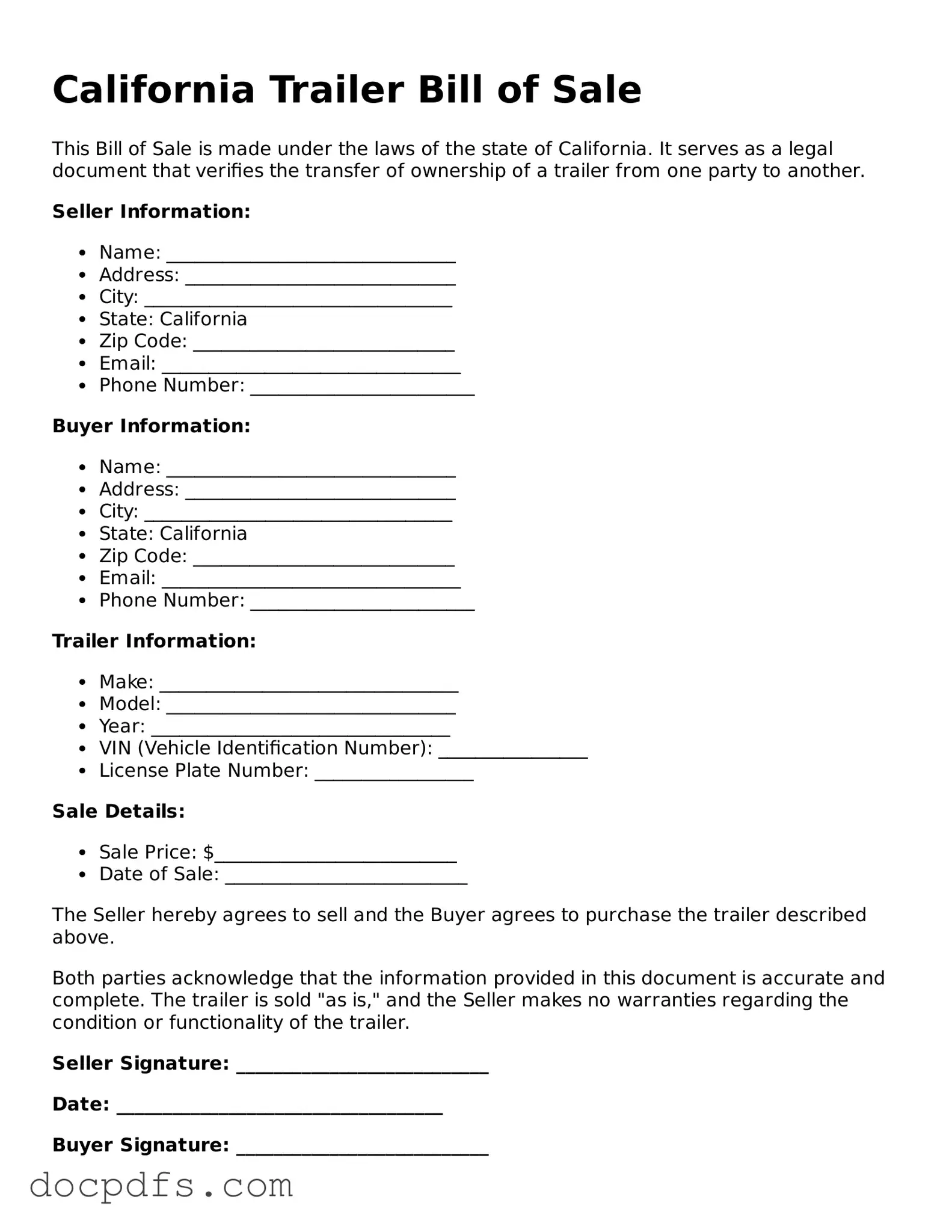Free California Trailer Bill of Sale Form
The California Trailer Bill of Sale form is a legal document used to record the sale and transfer of ownership of a trailer in California. This form serves as proof of the transaction, detailing important information about the buyer, seller, and the trailer itself. Understanding this form is essential for both parties to ensure a smooth transfer of ownership and to comply with state regulations.
Open Trailer Bill of Sale Editor Now
